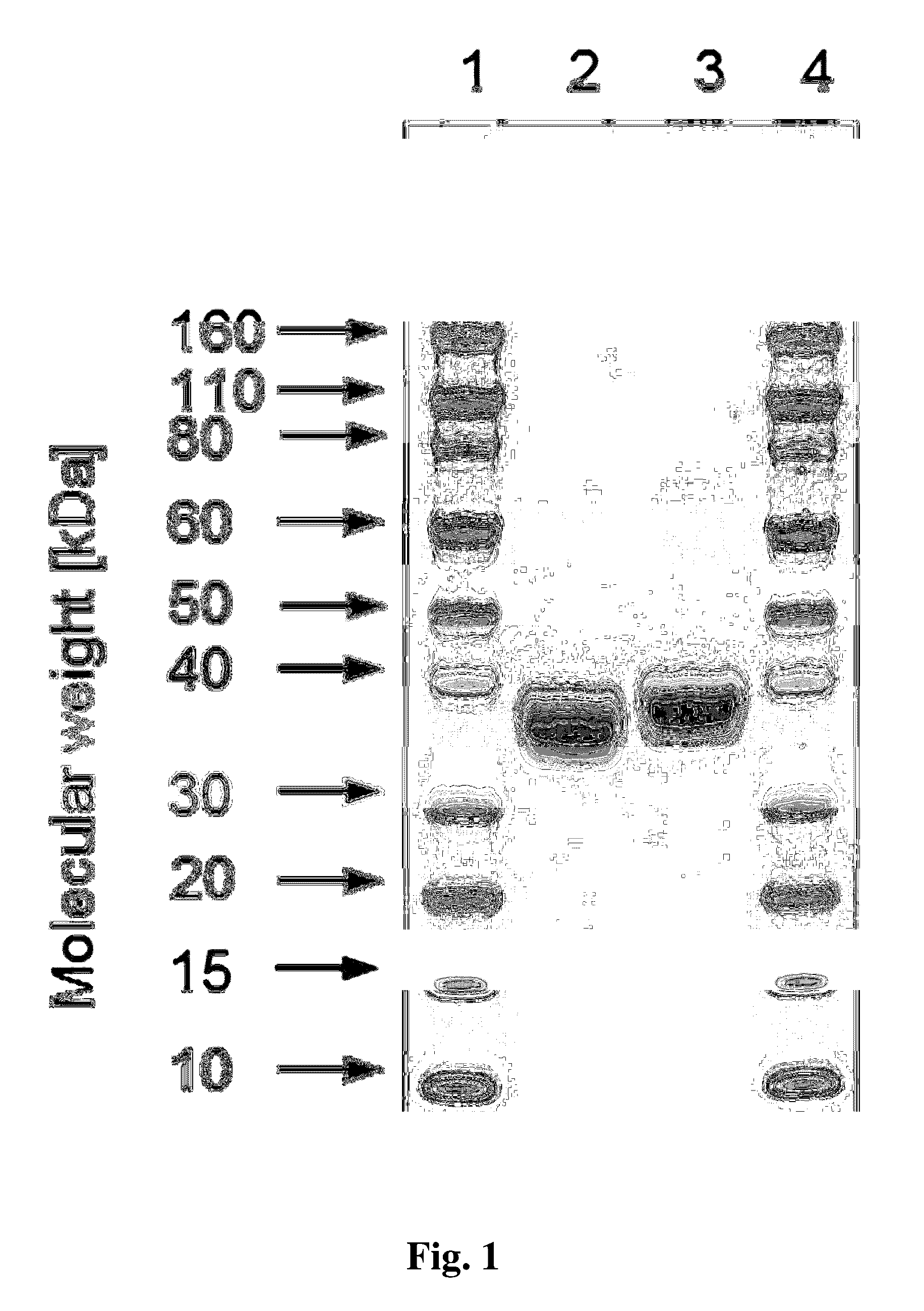Quantitative control of sialylation and specific mono-sialylation
a quantitative control and specific monosialylation technology, applied in the direction of immunoglobulins, peptides, transferases, etc., can solve the problems of limited access to recombinant st6gal-i for therapeutic applications, lack of quantitative control means and methods,
- Summary
- Abstract
- Description
- Claims
- Application Information
AI Technical Summary
Benefits of technology
Problems solved by technology
Method used
Image
Examples
example 1
Test for Sialyltransferase Enzymatic Activity
[0120]Asialofetuin (desialylated fetuin, Roche Applied Science) was used as acceptor and CMP-9-fluoro-NANA (CMP-9-fluoresceinyl-NeuAc) was used as donor substrate (Brossmer, R. & Gross H. J. (1994) Meth. Enzymol. 247, 177-193). Enzymatic activity was determined by measuring the transfer of sialic acid from the donor compound to asialofetuin. The reaction mix (35 mM MES, pH 6.0, 0.035% Triton X-100, 0.07% BSA) contained 2.5 μg of enzyme sample, 5 μL asialofetuin (20 mg / ml) and 2 μL CMP-9-fluoro-NANA (1.0 mg / ml) in a total volume of 51 μL. The reaction mix was incubated at 37° C. for 30 minutes. The reaction was stopped by the addition of 10 μL of the inhibitor CTP (10 mM). The reaction mix was loaded onto a PD10 desalting column equilibrated with 0.1 M Tris / HCl, pH 8.5. Fetuin was eluted from the column using the equilibration buffer. The fractions size was 1 mL. The concentration of formed fetuin was determined using a fluorescence spectr...
example 2
[0121]Analytical SDS gel electrophoresis was carried out using NuPAGE gels (4-12%, Invitrogen). Samples (36 μl) were diluted with 12 μl NuPAGE LDS sample buffer (Invitrogen) and incubated for 2 min at 85° C. Aliquots, typically containing 5 μg protein were loaded on the gel. The gels were stained using SimplyBlue SafeStain (Invitrogen).
example 3
N-Terminal Sequencing by Edman Degradation
[0122]The N-terminal sequences of expressed variants of human ST6Gal-I were analyzed by Edman degradation using reagents and devices obtained from Life Technologies. Preparation of the samples was done as described in the instruction manual of the ProSorb Sample Preparation cartridges (catalog number 401950) and the ProBlott Mini PK / 10 membranes (catalog number 01194). For sequencing the Procise Protein Sequencing Platform was used.
PUM
| Property | Measurement | Unit |
|---|---|---|
| pH | aaaaa | aaaaa |
| pH | aaaaa | aaaaa |
| pH | aaaaa | aaaaa |
Abstract
Description
Claims
Application Information
 Login to View More
Login to View More - R&D
- Intellectual Property
- Life Sciences
- Materials
- Tech Scout
- Unparalleled Data Quality
- Higher Quality Content
- 60% Fewer Hallucinations
Browse by: Latest US Patents, China's latest patents, Technical Efficacy Thesaurus, Application Domain, Technology Topic, Popular Technical Reports.
© 2025 PatSnap. All rights reserved.Legal|Privacy policy|Modern Slavery Act Transparency Statement|Sitemap|About US| Contact US: help@patsnap.com



